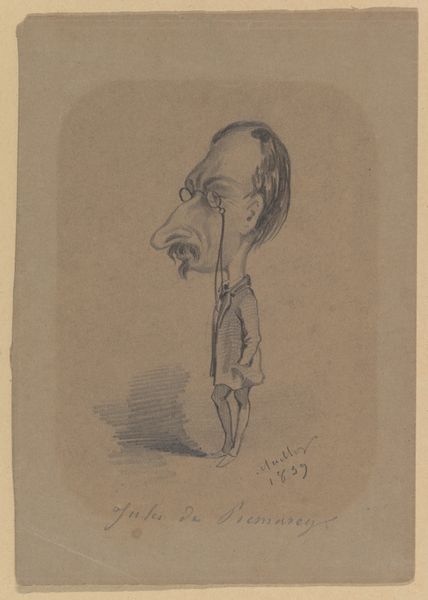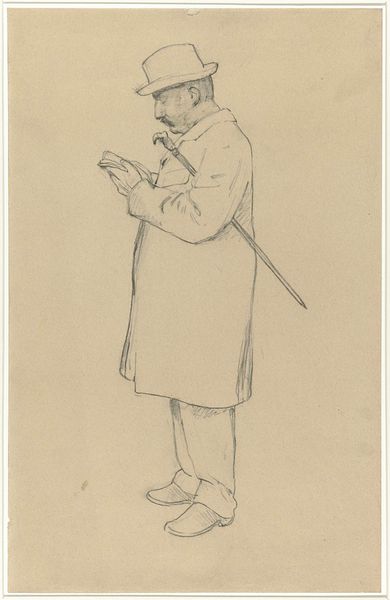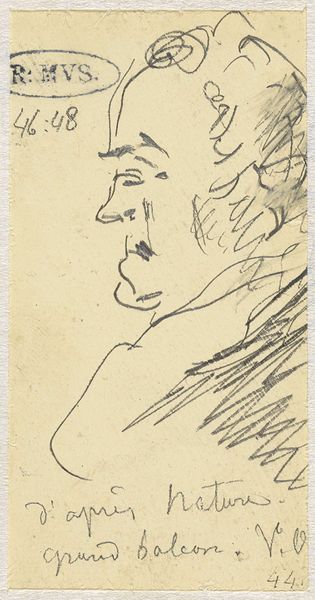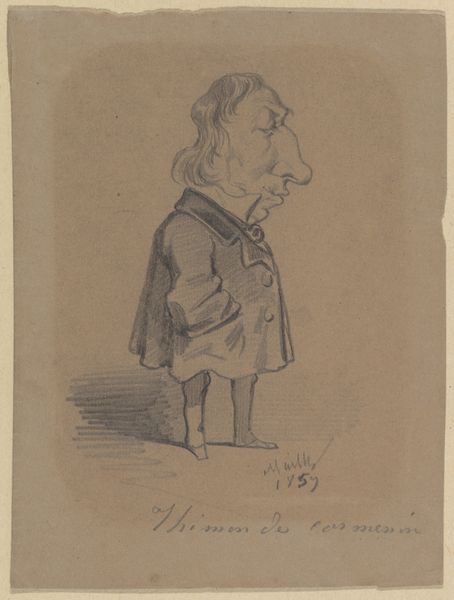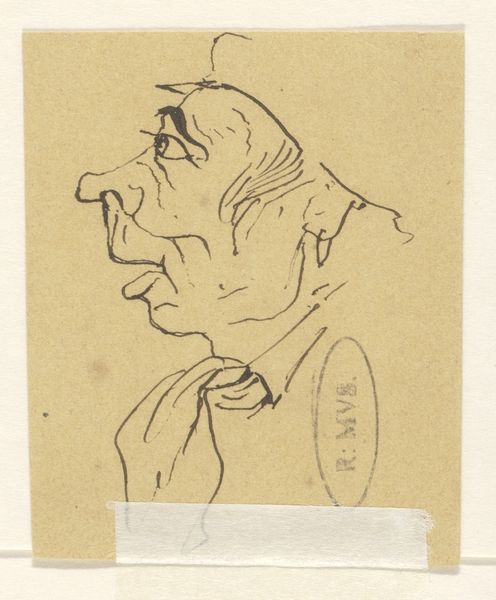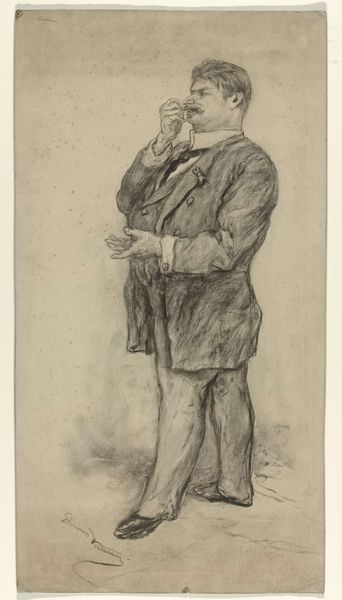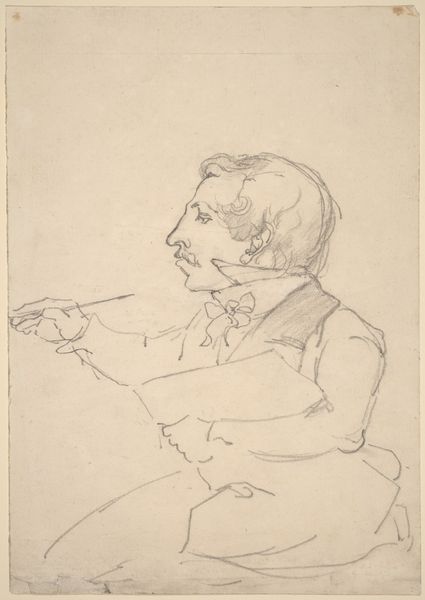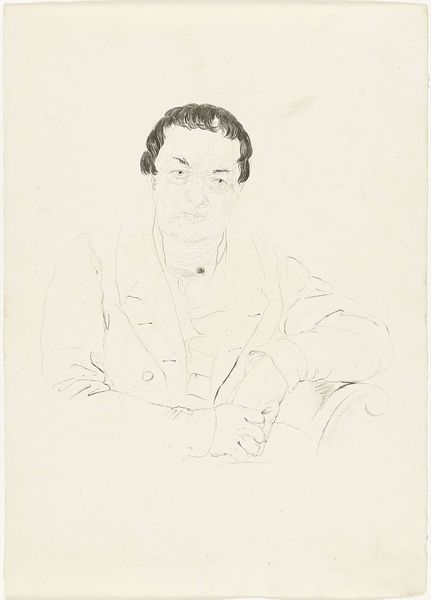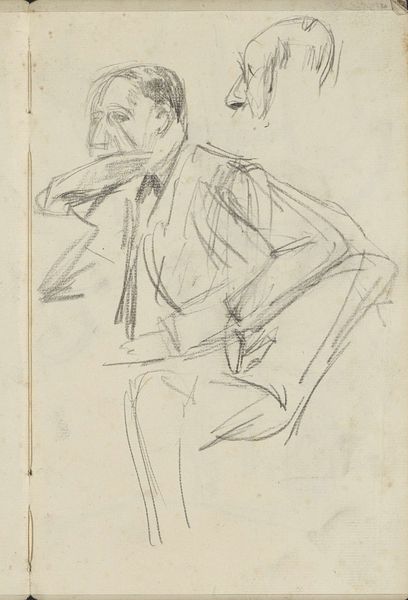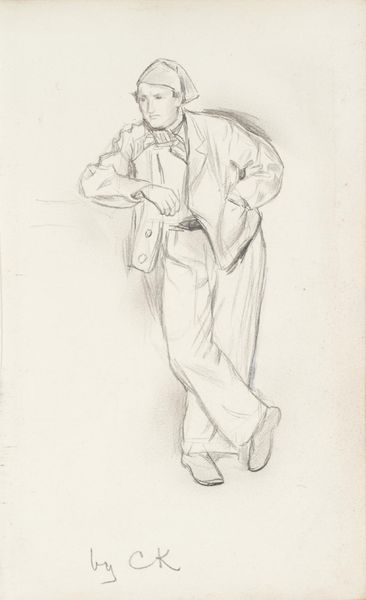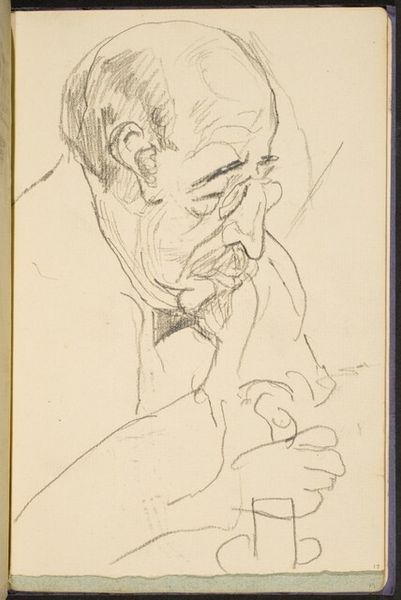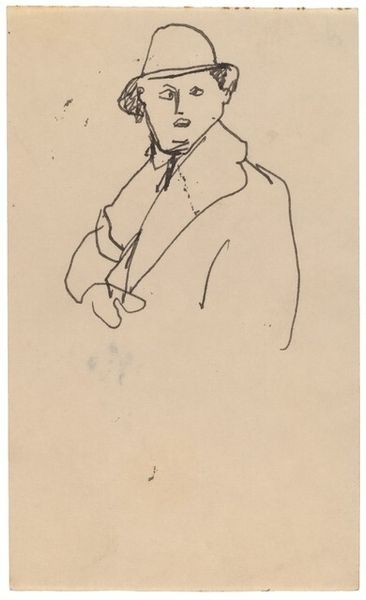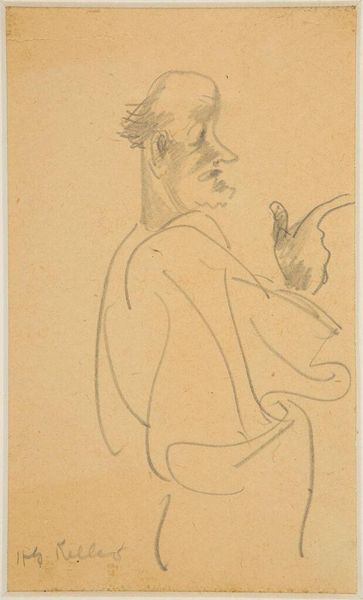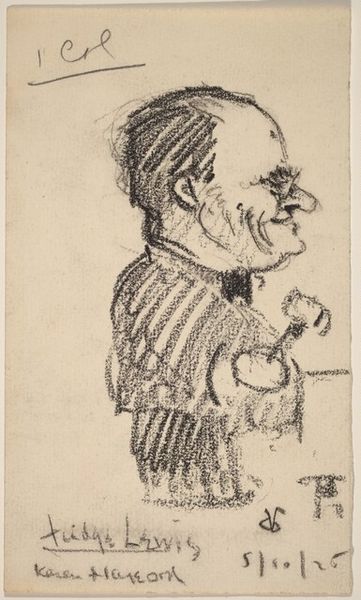
drawing, print, pen, charcoal
#
portrait
#
drawing
# print
#
figuration
#
character sketch
#
pen-ink sketch
#
pen
#
portrait drawing
#
charcoal
#
modernism
Copyright: National Gallery of Art: CC0 1.0
Curator: Welcome. Today, we’re looking at André Dunoyer de Segonzac’s "The Fat Clown," a drawing made in 1930. It appears to be primarily created with pen and ink, and possibly charcoal, on paper. Editor: Well, my first thought is that this clown seems surprisingly melancholic, even weary. The lines are so sparse, almost hesitant, as if Segonzac was capturing a fleeting feeling. Curator: Indeed. Looking at the material reality of this piece, the quick, gestural lines suggest an economical use of resources. It's as if Segonzac is saying, "I don't need elaborate details to convey a sense of form and being." The paper itself looks like it could be from a common sketchbook. Editor: And that modesty speaks volumes, doesn’t it? It's not trying to be precious. It's raw observation, like catching the clown off-duty, backstage even. Curator: Precisely. This challenges the conventional associations of clown imagery, often seen as frivolous and light. Instead, we have what appears to be a commentary on the human condition and the performance of identity, filtered through the lens of early 20th-century anxieties. Note how Segonzac foregrounds the making of this clown. It’s the social position, maybe his pay? We're not in the circus tent; this feels decidedly personal. Editor: It’s almost as if the exaggerated costume becomes a prison. The gesture of the open hand, is it a plea, or simply the resignation of one who has come to accept that life is a series of performances that are never really appreciated? And that raw emotionality comes across through such basic marks! It's amazing. Curator: What the artist does is show, in a direct and unassuming manner, is that creative and economic processes are inevitably connected. So it shows how art, entertainment, and work have so much in common in an open way, both for the artist and the viewed subject. Editor: To think that with such humble tools and clear vision, an artist can communicate that... it leaves me speechless, and makes you rethink a whole world that exists far from ours, hidden between acts. Curator: Well, let's leave our listeners to reflect on this interplay between art, identity, and labor, and hopefully spark new ways of connecting visual materials to its historical conditions.
Comments
No comments
Be the first to comment and join the conversation on the ultimate creative platform.
